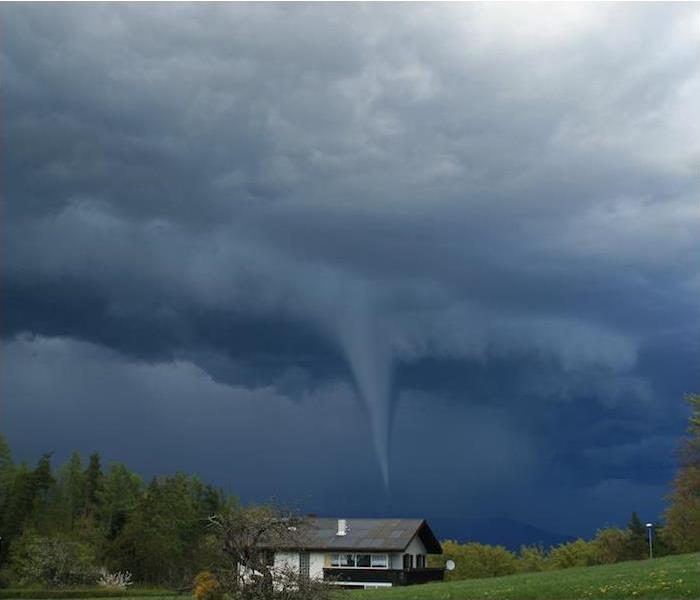Tornado Safety Tips for Everyone | SERVPRO® of Van Nuys South
5/9/2019 (Permalink)
With springtime comes unpredictable weather—and knowing this means you should always be prepared for the chance of severe thunderstorms that lead to perfect conditions for tornadoes.
April and May have, historically, been reported to have the highest occurrences of tornadoes at 30% and 24% respectively, which means we are now in the midst of tornado season all throughout the whole United States. Included in this blog are some tips and information on tornadoes that can help keep your family prepared for the worst possible scenario.
Severe thunderstorms, especially those known as “supercells,” are responsible for the roughly 1,200 tornadoes that occur in every state of the U.S. each year.
The formation of a tornado begins when changes in wind speed and direction create a horizontal spinning effect within a storm cell. This is then tipped vertical by rising air moving up through the thunderclouds.
You will most likely not see the tornado’s signature funnel cloud at first because it starts out transparent, but that funnel will become visible as water droplets from the storm’s moist air condense or when dust and debris are picked up.
A typical tornado can grow to be 660 feet wide and will move at 10 to 20 miles per hour, although larger and faster storms have been observed. Hail and intense winds of over 200 mph can accompany tornadoes.
Ideal conditions for tornadoes occur during the late afternoon hours in the spring and summertime as the air becomes unstable in the cooling temperatures. However, remember that tornadoes can occur anytime and anywhere and no state in our country is exempt.
Get to know the difference between a tornado watch and tornado warning. A watch is issued when the conditions are favorable for tornadoes, while a warning is issued when a tornado has been reported by spotters or indicated by radar.
A tornado watch alerts you to be aware that the weather conditions are unstable and could change, but a warning for your area means you should take immediate action to find safe shelter, especially if you are in the path of the tornado.
- Underground options like a basement or storm shelter.
- The lowest part of your home, in an area that is away from outside walls, doors and windows. Interior closets and bathrooms can be ideal options.
- If you are outside, try to get to a sturdy building. Mobile homes and trailers are not a safe option.
- If on the road and no building access is available, do not get under an overpass or bridge. Instead, find a low, flat location and use your arms to protect your head and neck.
Equip your home shelter with working flashlights, a battery-powered weather radio and extra fully charged batteries. Also, when you are taking shelter in your home, use furniture items like couch cushions, mattressesor blankets to keep your head and neck covered and protected.
If you are caught out on the road during a tornado, NEVER try to outrun it! Instead, seek shelter or exit your vehicle and lay flat on the ground covering your head and neck.
Tornadoes leave devastation and chaos in their paths. While meteorologists and weather services can provide some advanced warning to potential threats, tornadoes can still occur with little to no warning at all.
If your home or business has been damaged by a tornado, know that SERVPRO® of Van Nuys South is ready and waiting to jump into action and get cleanup and restoration of your property underway.





 24/7 Emergency Service
24/7 Emergency Service
